




[ENGN2211 Home]
Second order circuits have two dynamic elements, e.g.
the series RLC circuit of Figure 28.
Let's calculate the current i(t),  .
.
Figure 28:
Second-order RLC circuit.
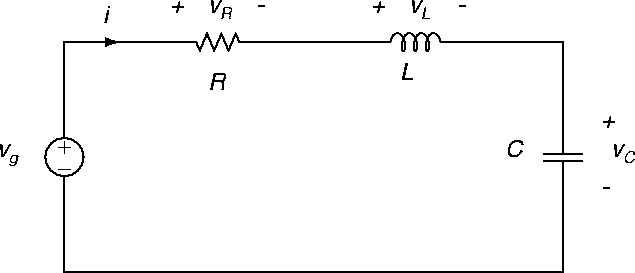 |
Suppose L=1 H, C=1/4 F, and R will be specified.
The initial conditions are given as
i(0-) = 0 A,
and
vC(0-)=2 V.
The source or input voltage is
vg(t) = 5 u(t) V.
In the s-domain, the circuit is as shown in Figure 29.
Figure 29:
Second-order RLC circuit in s-domain.
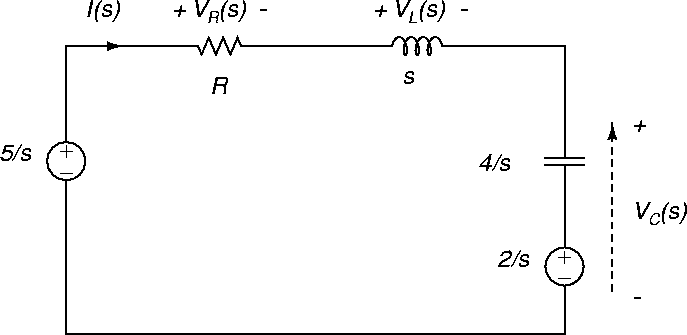 |
Applying KVL around the loop we get
and solving for current gives
 |
(32) |
The denominator polynomial gives us the characteristic equation
The roots of this equation s1 and s2
determine the nature of the response, and are given by
 |
(34) |
There are three cases, depending on the sign of R2-16.
Case 1. R>4 ,
R2-16 > 0. (Overdamped.).
,
R2-16 > 0. (Overdamped.).
Let's take R=5  .
The two roots are
.
The two roots are
(two distinct real numbers).
Therefore
s2 + 5s +4 = (s+4)(s+1)
and so, from (32) we get
using partial fractions. Transforming back we get
 |
(35) |
The waveform is illustrated in Figure 30.
Figure 30:
Overdamped response.
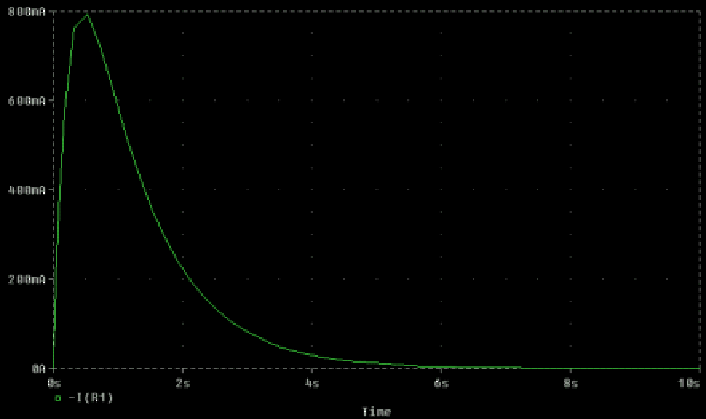 |
Case 2. R=4 ,
R2-16 = 0. (Critical damping.).
,
R2-16 = 0. (Critical damping.).
The two roots are
(two equal real numbers).
From (32) we get
Transforming back, we have
 |
(36) |
The waveform is illustrated in Figure 31.
Figure 31:
Critical response.
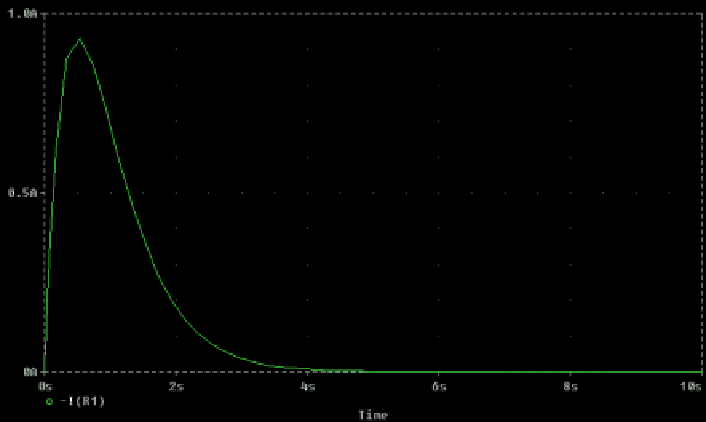 |
Case 3. R<4 ,
R2-16 < 0. (Underdamped.).
,
R2-16 < 0. (Underdamped.).
Now take R=2  .
The roots are
.
The roots are
(complex conjugate pair).
From (32) we get
Transforming into the time domain we get
 |
(37) |
The waveform is illustrated in Figure 32.
Figure 32:
Underdamped response.
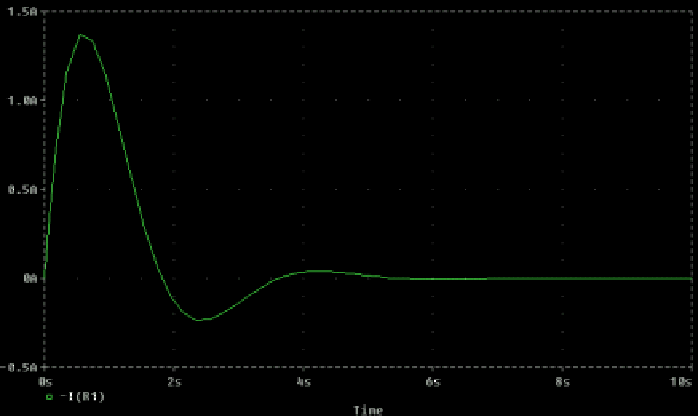 |





[ENGN2211 Home]
ANU Engineering - ENGN2211
![]() .
.
![]() ,
R2-16 > 0. (Overdamped.).
,
R2-16 > 0. (Overdamped.).
![]() .
The two roots are
.
The two roots are
![]() ,
R2-16 = 0. (Critical damping.).
,
R2-16 = 0. (Critical damping.).

![]() ,
R2-16 < 0. (Underdamped.).
,
R2-16 < 0. (Underdamped.).
![]() .
The roots are
.
The roots are
